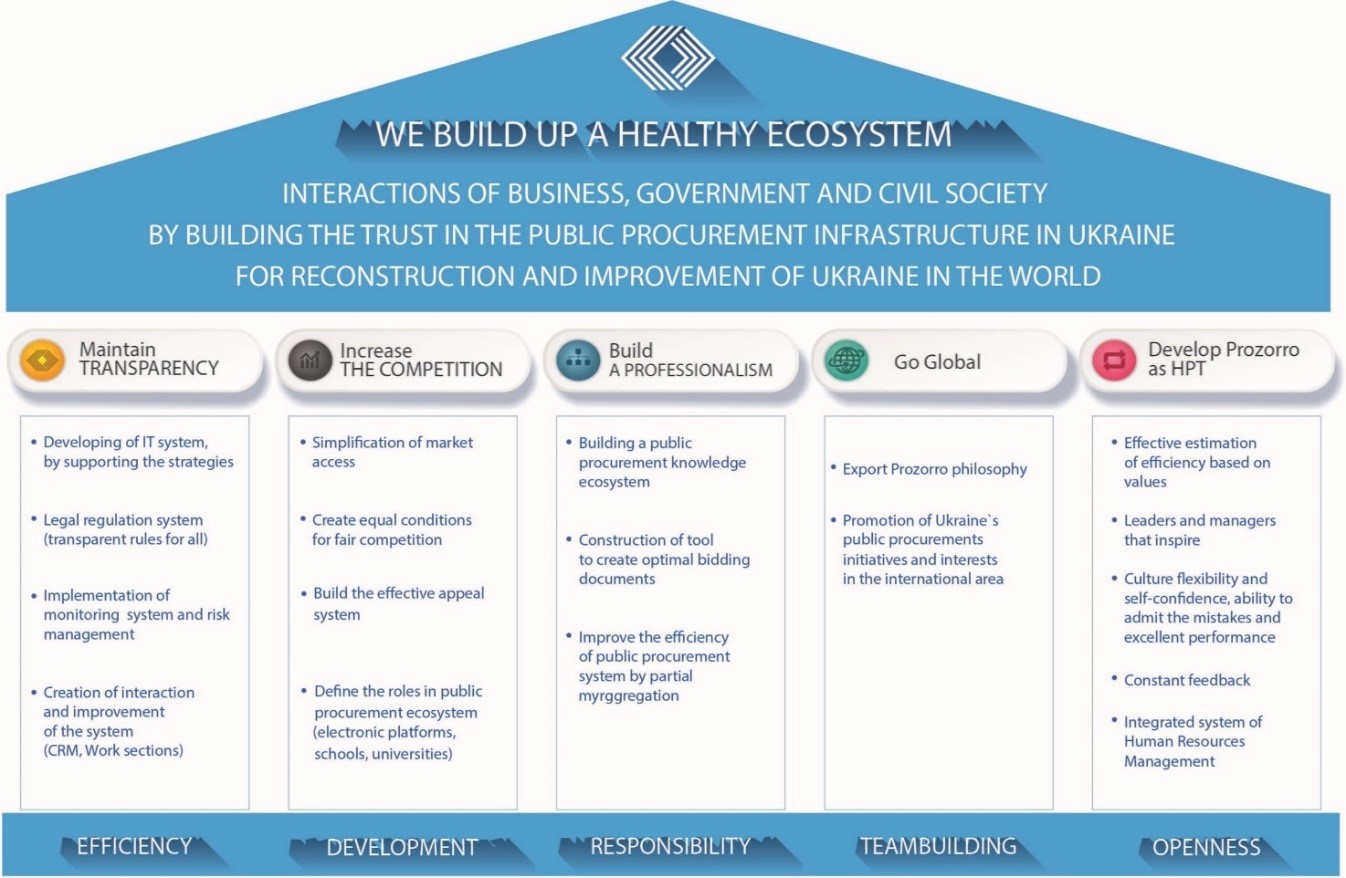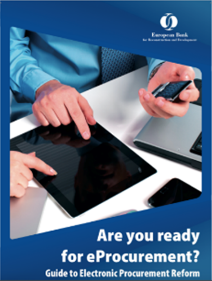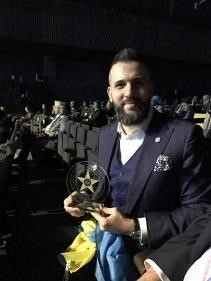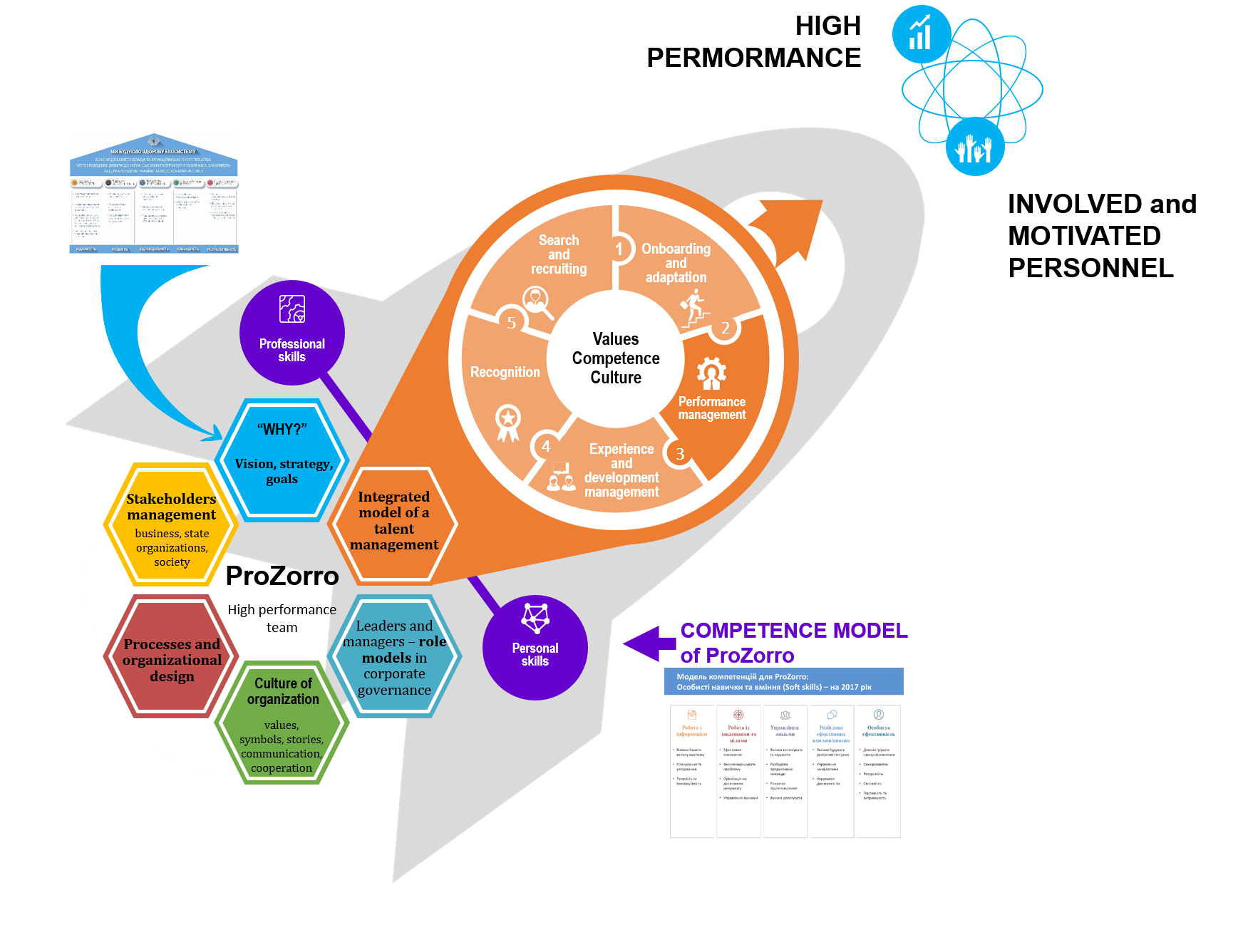Huge changes occurred in the public procurement sphere in Ukraine in 2016. With the newly adopted public procurement law coming into force, the use of our innovative new ProZorro system, which had been piloted for below the threshold procedures since the beginning of 2015, became mandatory for all contracting authorities in two waves, starting from April 1, 2016.
Simultaneously, Ukraine finalized its GPA accession through parliament’s ratification of the relevant legislation, making Ukraine the 47th member of the honorable GPA family.
Since then, the infrastructure of public procurement in Ukraine has been growing rapidly and maturing fast. Very optimistic breakthroughs in anti-corruption, monitoring, professionalization and education, as well as Prozorro’s first global steps and capacity building, were achieved by our ProZorro team. A combined team of ProZorro members and consultants passed through the scalability stage successfully, and progressed further.
During the second part of the year, our team structured its activities, elaborated a holistic strategy, and undertook the required actions to develop ProZorro from a promising and innovative government start-up to a sustainable ecosystem with balanced interests of government, business and civil society.
The overall strategy of ProZorro, covering the Public Procurement Department and the State Owned Enterprise (SOE) ProZorro, is presented in the graphic below.

In the ProZorro “Strategy house” you can see a vision (or so called “Why?” statement) on the roof, the values in the basement, and the five pillars of the team’s efforts and directions for development. The “Why?” statement is rather long, because three type of people are working in the team:
- the reformers – the first message on the ecosystem addresses them
- the procurement professionals – the second message on the infrastructure addresses them
- the IT visionaries with the global ambitions – the last message addresses them.
Such metaphorization of the strategy each team member the chance to understand the surrounding context and at the same time be focused on his or her particular objectives.
For better understanding, the results of the work done in 2016 will be explained in the same logic in this article.
Transparency
The first and the main area that we focused in 2016 was the scalability of the IT-system and transition from piloting on below threshold procedures to a full-scale system. In that regard, we implemented several options for holding open tenders, negotiation procedures, and competitive dialogs. Framework agreements were left for 2017, and restricted tenders (which will also require relevant legislative amendments) also left for later. Because of the implementation of the system in two waves, the IT system had to support two procurement-item glossaries in parallel: the local DKPP and European CPV. At the same time, all necessary preparations were done, and the CPV became the only official classifier starting from Jan. 1, 2017.
Therefore, all regulatory work was concentrated on launching the IT system for above-threshold tenders in 2016 as well. The main law on public procurement was signed by the president, and came into force in the middle of February 2016. According to the law, the system should be used by the following sequence:
- from April 1, 2016 – by central government and monopolies
- from the Aug. 1, 2016 – by regional governments and all other procurers.
The ProZorro team thus had only a month-and-a-half to adopt all of the necessary bylaws, including two Cabinet of Ministers resolutions and eight orders of the Ministry of Economic Development and Trade, of which only three had been registered with the Ministry of Justice. From all angles, it seemed to be completely unrealistic. However, it was done, because the legal team of the Department of Public Procurement took an absolutely innovative approach to project management, named Scrum[1]. With all its attributes: Scrum whiteboards, stand-ups (15-minute daily team meetings), retrospective weekly meeting and the like, all of the necessary stages were completed successfully.
On the monitoring and anti-corruption side during 2016, our key efforts were concentrated on attracting as much of civil society to that process as we could. We developed our public and professional BI-tools, improved data quality, trained activists and journalists, conducted seminars, started separate public monitoring resources like www.dozorro.org and launched many other interesting initiatives. The key player here was Transparency International Ukraine, with our support from the policy side. Regarding government auditing of procurement, we helped our State Audit Service with elaborating risk-management methodology and switching to electronic monitoring instead of a paper-based system. We conducted lots of seminars for the new police and the National Anti-corruption Bureau.
The main issue with the monitoring and risk management that we bumped into was data quality. With the help of EBRD experts, we carried out a huge amount of political work connected with persuading different stakeholders in the mandatory calculation of the price per unit. Appropriate changes to the legislation were drafted, and should be implemented in 2017.
The overall figures for 2016 can be seen below.

Competition
The next pillar in our “Strategy house” is increasing competition. Our main KPI here is the average bid per tender, and all the efforts are streamlined to increase this ratio.
You can see that for the end of 2016 the ratio was 2.42.
We have currently such a low ratio because of the overly rapid transition to eProcurement. New businesses that have not participated in public procurement before are in no hurry to enter the new market because of distrust in the government. That is why we assess the role of the platforms in the system as a crucial. Platforms receive comparatively small fees from suppliers for every bid. The better service they provide – the more clients they have. The more clients they have – the more money they earn, and the more competition and lower prices we have in procurement.
We also try to encourage higher participation and competition. We conduct seminars for business, including those together with big Contracting Authorities. We succeed in some PR and advertising campaigns with the support of our donors, and we expect substantial increase in average bid per tender ratio in 2017.
Professionalization
The third pillar of the Prozorro strategy is professionalization, where we have an educational part and procurement centralization, both of which have strong support from a dedicated EU Project[2]. Regarding education, we are trying to move all our activities online:
- prozorro.org – our knowledge data-base, with a library of typical specifications and a forum;
- the Coursera-like online courses for Contracting Authorities and the business at Ukrainian online platform Prometheus[3] (and new online course for NGO and civil society activists will arrive by summer 2017 at another Ukrainian platform OpenMaidanUniversity[4]);
For offline face-to-face training, we elaborated an entirely new program for professional procurers with one of Ukraine’s leading business schools – the Kyiv School of Economics[5]. In this program, we focus not on the legal part of the public procurement (procedures, rules, etc) but on the business logic and philosophy of the procurement and supply chain. What is the procuring entity’s strategy? What can the procurement strategy be? How does one elaborate a correct procurement strategy to support the core strategy, instead of concentrating on procurement procedures? These types of questions should be in the focus. Preparation work was done during 2016, and the first group will start studies in the KSE from March 2017.
A lot of preparation work was done in the centralization part of professionalization as well during 2016. For that purpose, the ProZorro team adopted a special resolution of the Cabinet of Ministers on piloting CPB, registered the appropriate entity SOE “Professional Procurements,” hired the team, and acquired donor support. We are expecting the first announcement of a tender by CPB closer to summer 2017.
Go global
Expanding ProZorro principles (https://en.wikipedia.org/wiki/Prozorro) to other places is a very important part of ProZorro’s development. We can outline two main benefits here:
- Improving and expanding the Open Contract Data Standard to different countries gives unprecedented opportunities for searching through and comparing public procurement data between countries;
- An implementing procurement model with commercial platforms with the same OCDS standard in different countries opens up a huge space for cross-border trade boosting. It is obvious that if commercial platforms agree all formalities and construct an interoperable channel for the cross-border public procurement, access will be much faster than if their governments do that.
The full availability of the code for ProZorro as open source, as well as two awards – the World Procurement Award and the Open Government Award in 2016 – boost that process substantially. So does becoming a showcase for the EBRD and Open Contracting Partnership. (Picture 3)



(Picture 3)
There were several presentations of ProZorro as an eProcurement solution for different countries during 2016. For now, Moldova has been implementing some functionality of our central database with the support of the EBRD. The core ProZorro team, with the Ukrainian office of Transparency International and key software developers, as well as two Ukrainian platforms, were heavily involved in this process.
Develop ProZorro as a High Performance Team
The transition from a bright and innovative start-up to a sustainable Public Procurement ecosystem for a rather large country needs another approach in management and infrastructure. With low wages and the lack of motivation of public servants in Ukraine, attracting, retaining and inspiring talented personal is more and more difficult. Taking into consideration this challenge, the ProZorro team has started a separate project devoted to transforming its office into a High Performance Organization.
We tackled following issues:
- How to recruit people to the team
- How to set up the performance-management process
- How to be “the best place to work”
During the second part of 2016, the group of ProZorro line managers, together with two groups of consultants, Changers and PWC, worked on strategy and different HR-practices for ProZorro. As a result, all components of the High Performance Team (HPT) were elaborated, including Strategy house itself, the Stakeholders’ roadmap, a Competence model and the like. Afterwards this concept of the HPT became a good engine (Picture 4) for a full-cycle ProZorro talent management system, with the aim of achieving outstanding results and involving a highly motivated team.

(Picture 4)
As a project result, we came to these conclusions:
- How to recruit people to the team:
- The priority should be given to young professionals, who are seeking self-actualization and self-development
- We should promote access to participating in projects that give practical experience that can be used outside of public service
- How to set up the performance-management process:
- Clear and challenging strategic goals should be set, as well as an action plan for their achievement. The more visual metaphors the better
- The hierarchy should be decreased, and managers should follow the leadership without a formal authority principle, and with an agile project management approach
- The goals and competencies performance appraisal should be regular and stimulate self-development
- The “best place to work” atmosphere should be created by
- returning management and responsibility back to people
- ensuring there is good morale and a positive attitude in the premises
All processes of the ProZorro talent management system, such as recruiting, onboarding, performance management and the like, were organized and structured as well.
Plans for the future and main conclusions
Many positive results were achieved in various Prozorro areas in 2016. The “Strategy house” ProZorro is becoming not only bigger and nicer, but also more sustainable. We have great plans for improving our monitoring and risk management tools and methodology. Implementing our principles in other countries is a substantial priority for us as well. After some trial and error, we concluded that every ProZorro implementation in a foreign country should follow a bottom-up approach, which means pitching local marketplaces and civil activists first. And then, after some mutual effort in exploring local context, the newly elaborated and customized concept should be presented to the local government in order to construct a local coalition of government, business and civil society. In such a manner, the main principle of the ProZorro philosophy – the golden triangle of partnership (Picture 6) could be fulfilled.

(Picture 6)
We continue to insist that the full ProZorro model is not universal and probably won’t suit all countries’ requirements. However, the main principles are general and applicable widely:
- The electronization of public procurement increases transparency and simplifies access for business. Transparency in turn is a great instrument for fighting corruption, gaining trust and improving government accountability
- Using OCDS as a common standard is a great opportunity for international data exchange and better analysis, comparison and market understanding for all parties
- the operation of private marketplaces in the procurement infrastructure not only increases the level of service and competition, but simultaneously enables global public procurement exchange creation, which automatically boosts cross-border trade and international interoperability.
Oleksandr Starodubtsev is the head of the Department of Public Procurement Regulation at the Ministry of Economic Development and Trade of Ukraine. You can find more information about Ukraine’s ProZorro system at https://en.wikipedia.org/wiki/Prozorro.
[1] https://www.scrumalliance.org/why-scrum
[2] www.eupublicprocurement.org.ua
[4] www.vum.org.ua
[5] www.kse.org.ua
